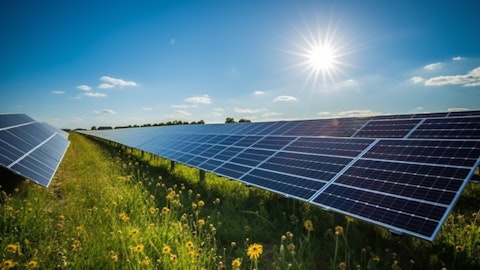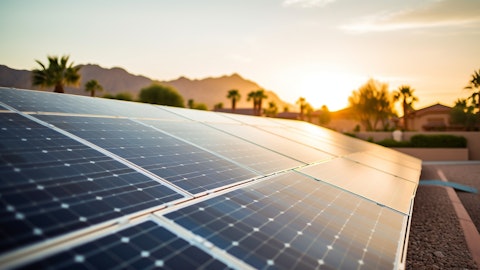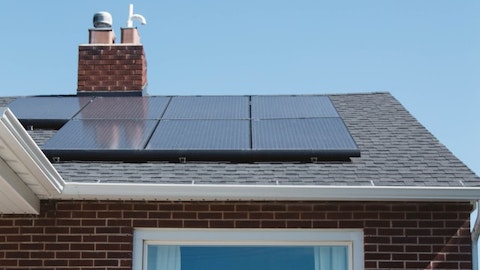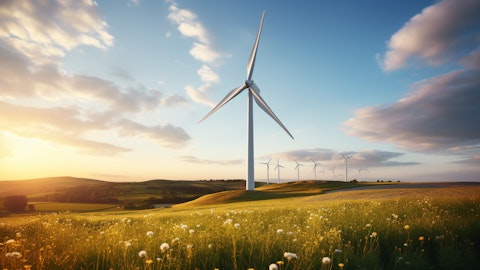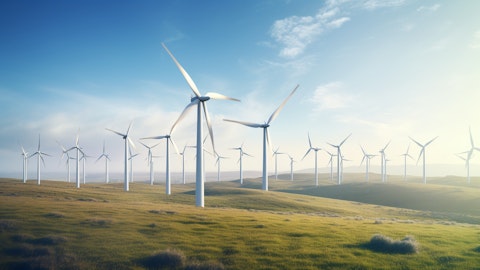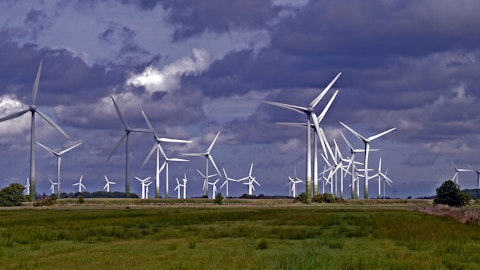And importantly, our ability to execute, I just think we had very volatile markets that which made kind of execution and underwriting very difficult in ‘23.
Mark Jarvi: And then how would you think about funding any M&A on top of your existing commitments?
Chris Sotos: Yes, depending what size of it is, we obviously have an unfunded revolver which we kind of use the warehouse first. And I think the previous question we always kind of use excess cash whatever we borrow, if you look at our excess cash to basically pay back first, then any excess debt capacity which was the previous question, and then equity last. So for us depending on where capital markets are at the time and the acquisition, we obviously have significant revolver capacity so we’re not forced to go to the markets at a certain size.
Mark Jarvi: Understood. And then as you look through the next three to five years, and at some point, you guys will give us some more clarity on where you think the organic growth or sort of the drop-down growth will come from. But besides, is there anything else on the CAFD profile related to tax equity partnerships? Are there any notable flips coming up, potential buyouts, anything that sort of changes the CAFD profile, the existing assets of the next three to five years?
Chris Sotos: Those come up fairly regularly, but those, I wouldn’t say are material drivers of a paradigm changing number. In our disclosure, you see us kind of do one of those a year. In general, they tend to be pretty small. So to your question, those flips do come up, but they tend to not be material drivers of CAFD in the long term.
Mark Jarvi: Okay, and the last question for me is just, now you saw PPA prices rise over the last couple of years, return objectives moved higher, including your own CAFD targets. Assuming that rates plateau or go lower here, just updated you in terms of where you think returns are going to trend over the next 12 months here. How are you seeing that? Maybe others, maybe other CG level in terms of where you’ve seen PPA price is clear and more recently in terms of return potential?
Chris Sotos: Craig, if you don’t mind, speak for CWEG.
Craig Cornelius : Sure. I think as the weighted average cost of capital for sponsors and project owners across the industry rose over fiscal year 2023, the broad environment of industry participants factored that increased weighted average cost of capital into the prices they offered customers on new contracts. Those prices also took into account the equipment pricing environment that after the pandemic and other changes in trade policy became more elevated. And in today’s market, we see PPA prices remaining above where they were for comparable resources before the start of 2023. And we and other competitors, I think, are finding that customers still see value in those elevated PPA prices, in particular for customers who either as load serving entities or as end use customers see growing load and value the low emissions profile of the products that we’re selling.
So we don’t foresee meaningful declines in PPA prices from where they are today. And equally, because it’s a competitive environment, we don’t see an expectation for dramatic increases in returns that are produced for projects. But we are now able to support higher internal rates of return and higher cap deals on the new projects that we’re creating, which take into account the elevated cost of capital for the industry generally.
Mark Jarvi: Got it. So any decline in PPA prices would really be more effective of CapEx trends and I guess financing costs and not so much a sacrifice in IRR objectives.
Craig Cornelius : No, I don’t think so. I mean, I think what I think we’ve thought to be disciplined, we need to deliver accretive growth for Clearway Energy Inc. And I think in general, the industry’s largest project sponsors have entered an era where we are all being cautious in the way projects are configured and created. And I think, the largest customers having gone through all the disruption of the last three or four years increasingly value engaging with project sponsors who can deliver projects with certainty.
Operator: Our next question comes from the line of Justin Clare with Roth MKM.
Justin Clare: Yes, thanks for taking our questions here. So was wondering if you could maybe just update us on the progress, you’re making on contracting the open conventional capacity in 2027? Is it, could we see in the near term here some smaller amounts of that capacity contracted or was it more likely that something happens in the summer of this year. And then beyond that was wondering if you could maybe just talk about the other levers that you’re focused on for extending DPS growth into 2027. I know acquisitions is a part of it, but anything else meaningful that we should be considering.
Chris Sotos: So for the first part of your question, like, don’t get me wrong, the major procurement initiative. It’s kind of, you bid as part of the RFP processes on the utilities and the grid and the like, really in kind of call it late first quarter early second quarter and you find out about those awards call it third quarter when they’re binding late third quarter, maybe early fourth. So I think your point in terms of a real paradigm change, in terms of much more significant capacity, that’s when you’d see it. That being said, we’re constantly in communications with a variety of counterparties on the smaller side to try to move those numbers up at prices that we think are good as well. So to your question, if you were to say, hey, Chris, when we would see a multiple 100 megawatt move, that’s probably much more as part of that large procurement process.
